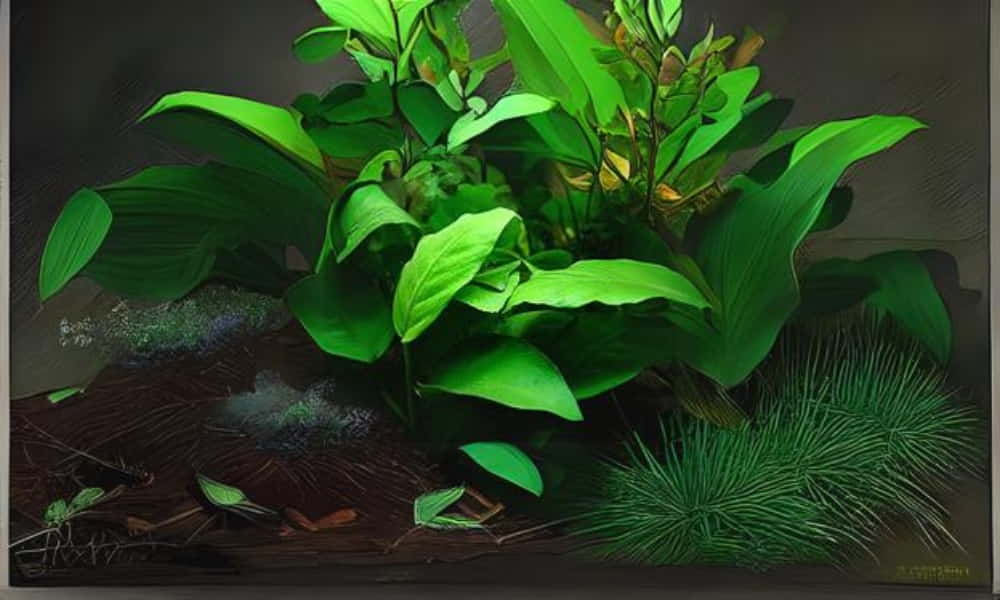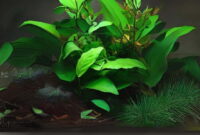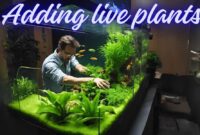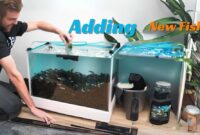Live Plants Pros and Cons Explained – Aquarium plants play a significant role by providing a unique and magnificent look in your tank. Fishkeepers use live plants not only for this purpose but also to create a healthy environment for their fish.
Though live plants are excellent and work well to maintain aquarium water quality, they also have some cons.
In this short article, I will discuss almost all the aspects of live plants. Therefore, continue reading.
Pros and cons of live plants in the aquarium
Read More
Before knowing the pros and cons of live plants, let me explain what live plants are.
Live plants are the actual and natural aquatic plants that grow in the water and die there after their life span. They play many major roles in the aquatic world. They generate oxygen and absorb carbon dioxide while doing photosynthesis. Animals in the water kingdom generate carbon dioxide and absorb oxygen.
Therefore, live plants balance the oxygen and carbon dioxide levels in the water. Not only that, but they also do some more beneficial work for fish in the aquariums as well as in other water bodies.
I am explaining these works in a listicle way-
Pros of Live plants:
1. Reduce Stress: The live plants reduce the stress of your fish by providing a true hiding place and increasing the water quality of your tank.
2. Enhanced Aesthetics: Live plants are vibrant and real. They have their beauty. If you place live plants instead of fake plants in your aquarium, you will do better for your aquatic friends as they both give a beautiful look to the tank and help your fish by purifying water and increasing oxygen levels.
3. Beneficial Bacteria Grow: Live plants grow some beneficial bacteria such as –
- Nitrosomonas bacteria: Works as a converter and converts ammonia to nitrite, which helps maintain water quality well.
- Nitrobacter bacteria: This bacteria also works similarly; it converts nitrites into nitrates.
4. Reduces Algae Growth: Live plants reduce algae growth, helping fish compete with nutrients.
5. Reduced Light Availability: A well-lit aquarium may sometimes help grow algae; therefore, a well-planted tank with suitable live plants helps reduce algae growth as the plants cover enough light to penetrate the tank.
6. Biological Filtration: Help colonise bacteria in your tank. These bacteria work to break down the nitrogen cycle. Fish waste produces ammonia that helps grow algae. Therefore, planting live plants will help your fish to grow rapidly and without any hindrance.
7. Act as Food Source: Plants are also one of the best food sources for fish and provide enough nutrients. Though some plants can kill your fish, always try to choose the correct live plants.
8. Allelopathy: Some plants release allelopathic chemicals into the tank water. These chemicals have the power to control algae growth and sometimes act as natural algicides.
9. Substrate Competition: This helps prevent the excessive release of nutrients into the water and stabilises the substrate of your aquarium. Thus, they reduce the availability of enough nutrients for algae to grow in the tank.
10. Realistic Ecosystem: Live plants create a realistic and natural ecosystem in your tank and unlock the potential of aquascaping. You can create a natural design for your underwater friends by planting live plants in your tank.
These are some of the benefits of live plants. If you use these plants, you will explore more.
Now come to the next topic i.e. the disadvantages of live plants in your tank.
Cons of Live Plants:
Instead of having so many benefits, there are many disadvantages to keeping live plants in your aquarium. In the section below, I explain things one by one. So, continue reading.
1. Increased Maintenance: Compared to fake plants, live plants require more care to thrive in your aquarium. They need proper and perfect fertilisation. Some plants need trimming at regular intervals as they grow rapidly and cover the space for your fish.
2. Proper Cleaning: Proper cleaning is required. If you see leaves floating in the water, remove them immediately, as these can negatively affect water quality.
3. Not Beginner-Friendly: If you are a beginner, I recommend not using live plants in your aquariums. Proper and perfect plant placement requires a lot of knowledge, and you will face many challenges while doing so.
4. Herbivorous Fish: Some herbivorous fish enjoy munching live plants. This can affect your interest in aquascaping when you see some plants munched, and your tank looks ugly for that. If you want to put live plants, you must choose a perfect and suitable fish species, which is challenging for a beginner.
5. Potential for Pests: Live plants sometimes carry snails, therefore, before introducing them into your tank, I recommend you clean them properly.
You can use the following components for cleaning purposes-
- Net – To remove debris.
- Trimming Scissors – To trim properly.
- Bucket – While cleaning or rinsing, a bucket helps take water.
- Soft Toothbrush – Helps you for removing algae, debris and many unwanted elements.
6. Cost: Remember, a high-quality live plant is more expensive than a fake or artificial plastic plant. These are not budget-friendly. If you have a low budget, go with fake plants.
7. Limited Rearrangement Scope: Many live plants require the substrate to thrive in the tank. Therefore, moving them here and there is very difficult compared to artificial plants.
These are some of the cons you will have to face if you want to introduce live plants in your aquariums.
Name of Some Live Plants:

Here, I am putting the names of some live plants with their scientific name. You can use them in your aquariums, as they are suitable for any setup.
- Sword Plants (Echinodorus)
- Amazon Sword (Echinodorus Bleheri)
- Water Sprite (Ceratopteris Thalictroides)
- Java Fern (Microsorum Pteropus)
- Anubias (Anubias Barteri)
- Hornwort (Ceratophyllum Demersum)
- Cryptocoryne (Cryptocoryne Wendtii)
- Guppy Grass (Limnophila Sessiliflora)
If you have a bare bottom fish tank, you can use the live plants mentioned below.
- Marimo Moss Balls (Aegagropila linetziana)
- Java Moss (Taxiphyllum barbieri)
- Anubias (Anubias barteri)
- Java Fern (Microsorum pteropus)
- Water Sprite (Ceratopteris thalictroides)
- Hornwort (Ceratophyllum demersum)
- Duckweed (Lemna minor)
Conclusion:
Instead of having so many pros and cons of using live plants in aquariums, aquarists or fishkeepers use them as they love to explore the aquatic world more than they explore in reality. It is not possible for everyone to explore water bodies like we do.
As we live in villages, we have more scope to explore the water bodies and their inhabitants.
If you live in an urban area and want to explore the aquatic world from there, you can use live plants in your tank. It will give you more experience than using fake plants.
If you like this article on the pros and cons of using live plants in aquariums, please share it with your urban friends so they can use such plants.







